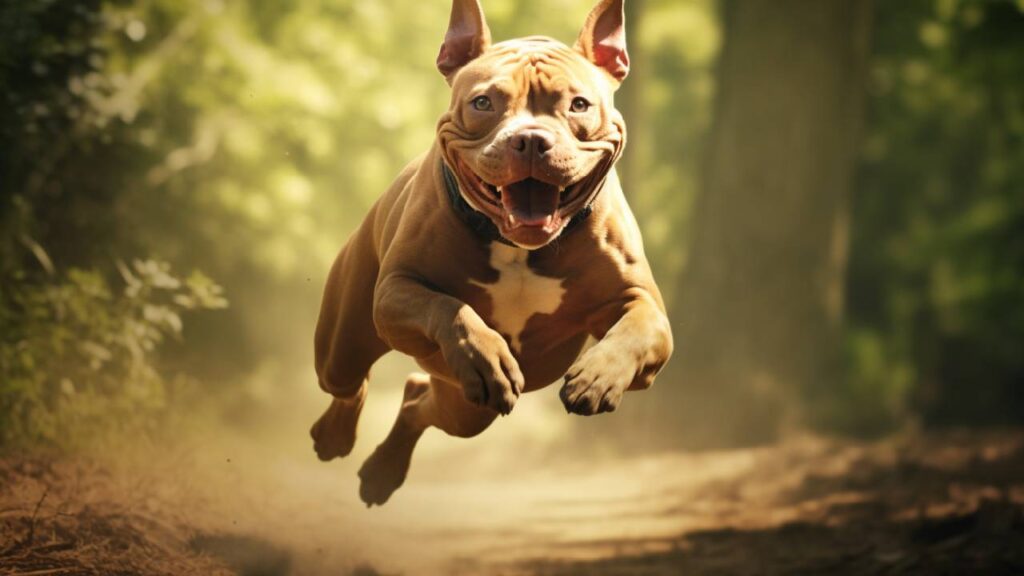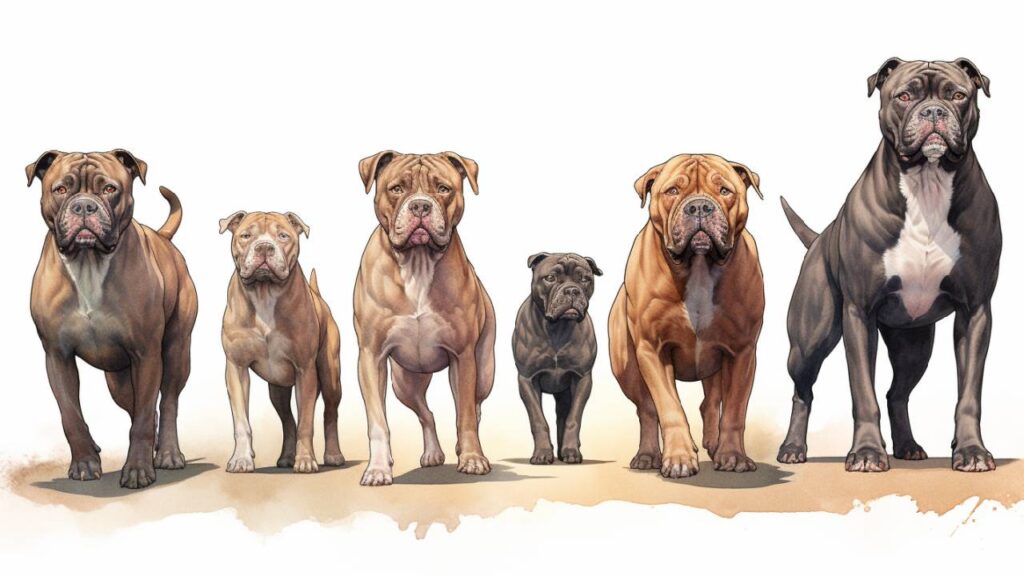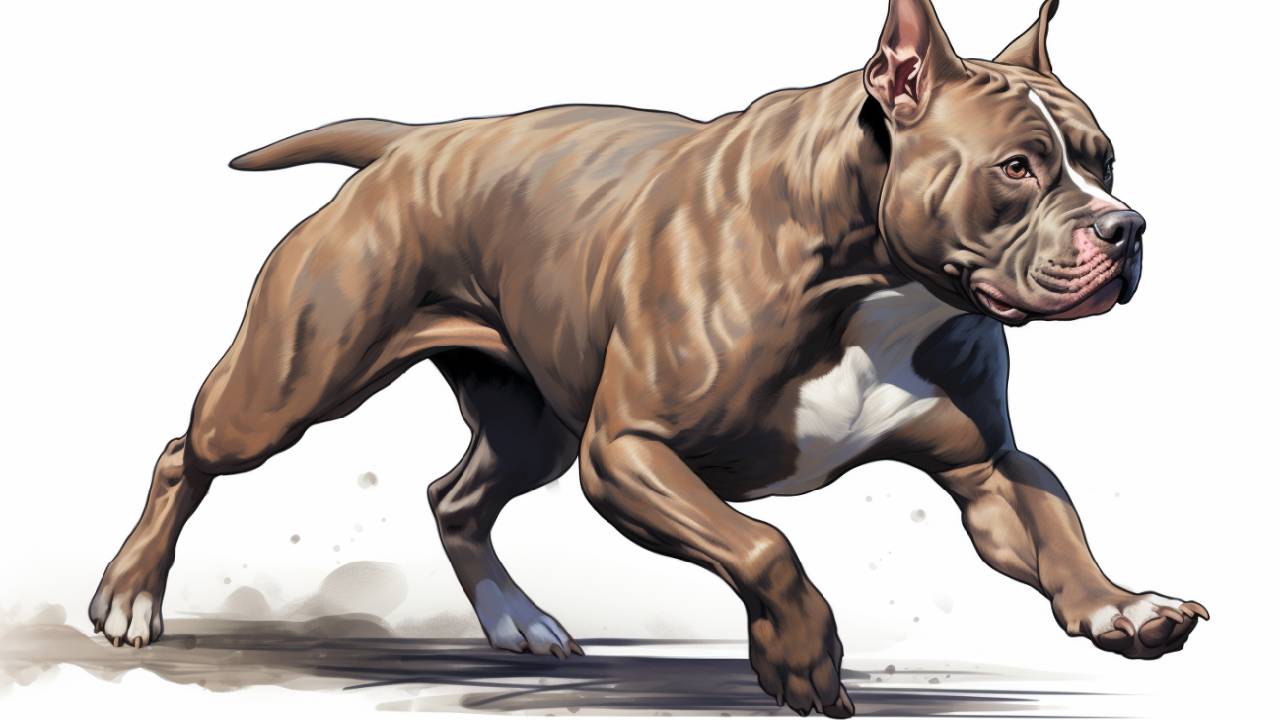Pitbulls have captured the hearts of dog enthusiasts worldwide with their robust build and remarkable athleticism. Whether you’re a proud owner or considering bringing a Pitbull into your family, the desire to see your furry friend in peak physical condition is natural.
In this comprehensive guide, we’ll delve into the world of Pitbull’s muscles, exploring practical ways to boost weight and muscle mass while nurturing a robust and healthy companion.
Understanding the Journey: What Makes a Muscular Pitbull?
The muscular physique of a Pitbull is a testament to their innate strength and athleticism. Their bodies are finely tuned machines designed to excel in various activities, from playtime to sports.
Its muscles are at the heart of a muscular Pitbull’s physique, composed of protein fibers that contract and expand to facilitate movement. Muscles work harmoniously with the skeletal system, providing the power required for running, jumping, and maintaining balance.
Muscle growth, or hypertrophy, occurs when muscle fibers are subjected to resistance and stress. This can happen during activities like exercise and play, which create microscopic damage to muscle fibers. As the body repairs and rebuilds these fibers, they become more robust, increasing muscle mass.
Pitbulls, with their genetic predisposition for athleticism, have the potential to develop substantial muscle mass.
The Role of Diet in Pitbull Muscle Building
Just as a fire requires the right fuel to burn brightly, a pit bull’s muscles need proper nutrition to flourish.

Diet plays a pivotal role in muscle building, providing the necessary nutrients and energy to support growth and repair. Protein, in particular, is the building block of muscles, providing the amino acids needed for muscle fiber development.
Proteins
Animal-based proteins are particularly effective in promoting muscle development. Lean meats like chicken, turkey, and beef offer complete protein profiles, containing all the essential amino acids required by your Pitbull’s body. These proteins support muscle growth, aid recovery, and contribute to overall health.
Fish is another fantastic protein source, bringing the benefits of omega-3 fatty acids to the table. These fatty acids have anti-inflammatory properties that assist in reducing muscle soreness and promoting joint health. Incorporating fish like salmon and mackerel into your Pitbull’s diet can contribute to their muscle-building journey.
Eggs are another protein powerhouse, containing high-quality protein along with essential nutrients. Add eggs to your Pitbull’s diet as a protein-rich treat, or mix them into their regular meals.
Carbs & Fats
While animal-based proteins are essential, offering variety in your Pitbull’s diet is also important. Incorporate a mix of different protein sources to ensure they receive a broad spectrum of nutrients. Always opt for high-quality, fresh, unprocessed options to provide your Pitbull with the best nutrition for muscle growth.
In addition to protein, fats and carbohydrates are essential for fueling workouts and maintaining energy levels. Healthy fats in foods like fish oil and flaxseed provide anti-inflammatory benefits that support muscle recovery. Carbohydrates from whole grains, vegetables, and fruits offer sustained energy for rigorous activities.
Hydration
Hydration is equally important, as the water supports metabolic processes that facilitate muscle growth and repair. Ensure your Pitbull has access to fresh water to promote optimal muscle function.
Consultation with a veterinarian or canine nutritionist can help tailor a diet plan that aligns with your Pitbull’s needs, ensuring they receive the best nutrition to thrive.
A Workout Routine Tailored for Pitbull Muscles
A well-rounded exercise routine is the cornerstone of developing a muscular and agile Pitbull.

While genetics play a role in your dog’s potential for muscle growth, consistent and targeted exercise can help them reach their full athletic potential.
Strength training is a crucial component of any muscle-building regimen.
Incorporate activities that challenge your pit bull’s muscles, such as tug-of-war, weight-pulling, and resistance-based games. These activities provide the resistance needed to stimulate muscle growth, making your Pitbull more robust.
Agility exercises are equally important. These exercises enhance your Pitbull’s muscles’ flexibility, coordination, and balance. Set up obstacle courses, teach them to jump through hoops, or engage in activities like fetch that require quick bursts of movement.
Cardiovascular workouts should also have a place in your Pitbull’s routine. While not directly related to muscle growth, cardio exercises like brisk walks, jogging, and swimming improve overall fitness, ensuring that your Pitbull has the stamina to engage in muscle-building activities.
It’s important to note that consistency is vital when it comes to exercise. Gradually increase the intensity and duration of workouts to prevent injury and allow muscles to adapt and grow.
Quality Over Quantity: Rest and Recovery
In pursuing a more muscular pit bull, getting caught up in the excitement of training and exercise is easy. However, it’s important to remember that rest and recovery are vital in muscle-building. Just as humans need adequate sleep to recover and grow, Pitbulls require quality rest to maximize the benefits of their efforts.
During intense exercise, muscles undergo micro-tears that are repaired and strengthened during recovery. Without proper rest, these tears can accumulate, leading to fatigue, decreased performance, and an increased risk of injury. Ensuring your Pitbull gets enough sleep and downtime between workouts is crucial for their overall well-being.
Create a comfortable and quiet space where your Pitbull can relax and unwind. Provide them with a cozy bed or cushion in a quiet corner of your home. Dogs generally need between 12 to 14 hours of sleep per day, so make sure they have ample opportunity to rest and recharge.
Additionally, consider incorporating active recovery days into their routine. These days, you engage in lighter activities like gentle walks, stretching, or low-impact games. Active recovery promotes blood circulation, helps prevent stiffness, and supports muscle recovery without overtaxing the body.
Monitoring Progress and Adjusting
Monitoring your pitbull’s progress as you embark on the journey to make your Pitbull more muscular is essential.

Building muscles takes time and dedication, and tracking changes in your Pitbull’s physique, strength, and overall well-being can provide valuable insights.
Regularly assess your Pitbull’s body condition. Use your hands to feel for changes in muscle tone and mass. If you notice improvements, it’s a sign that your efforts are paying off. However, if progress seems stagnant, consider adjusting their diet, exercise routine, or rest schedule.
Keep a journal or use a tracking app to document your Pitbull’s workouts, diet, and any changes you make. This allows you to identify trends and patterns, making it easier to pinpoint what’s working and what needs adjustment.
Every Pitbull is unique, and their response to training and diet changes may vary. Be patient and remain committed to the process, as consistent effort is the key to achieving your goal of a more muscular and healthy Pitbull.
The Role of Genetics
While striving to make your pit bull more muscular, it’s essential to acknowledge the role of genetics in the process. Genetics plays a significant part in determining a dog’s natural physique, including its muscle mass, bone structure, and overall body composition. While genetics provide a foundation, they don’t dictate the entire outcome.
Every pit bull’s genetic makeup contributes to its strengths and limitations. Some Pitbulls may be naturally predisposed to develop muscle more efficiently, while others might require more targeted training and specific nutritional adjustments to achieve similar results.
Genetics also influence metabolism, growth rate, and muscle fiber type. For instance, some Pitbulls may have more fast-twitch muscle fibers, making them more suited for explosive activities like sprinting and agility. Others might have more slow-twitch fibers, better suited for endurance tasks.
Embracing your Pitbull’s genetic predispositions is crucial for setting realistic expectations and goals. While you can work to enhance their muscle growth and overall fitness, respecting their unique attributes and maximizing their potential is essential.
Conclusion
As you make your Pitbull more muscular, you embark on a rewarding and transformative endeavor. Through a combination of proper nutrition, targeted exercise, rest, and consistency, you have the power to unlock your Pitbull’s innate potential for strength, agility, and vitality.
So, celebrate the milestones, adapt to their progress, and remember that the goal is to achieve a more muscular appearance and foster a deeper connection and a happier, healthier life for your beloved companion. Your Pitbull’s transformation into a stronger, more vibrant dog reflects your dedication, love, and commitment to their well-being.

FAQs About Ways To Make Your Pitbull Stronger
How do I determine the right amount of protein for my pit bull?
The protein requirement varies based on age, weight, and activity level. Generally, aim for high-quality dog food with a protein content of around 25-30% as a starting point.
Can supplements help in muscle building?
While supplements can aid muscle growth, they should complement a balanced diet. Consult your vet before adding supplements, and prioritize a nutrient-rich diet.
Is weightlifting recommended for Pitbulls?
Weightlifting can be risky due to potential injury. Focus on bodyweight exercises, agility training, and cardio activities to enhance muscle tone and overall fitness.
How do I prevent overtraining my pit bull?
Overtraining can lead to injury and burnout. Stick to a structured routine, allow adequate rest between workouts, and monitor signs of fatigue or discomfort.
How long will it take to see muscle gains in my pit bull?
Results vary based on factors like genetics and consistency. It may take a few weeks to a few months to notice visible muscle gains. Regular assessment and adjusting your approach as needed will yield the best results.
What’s the importance of warming up before exercise?
Warming up is essential to prevent injuries and prepare muscles for intense workouts. Engage in dynamic stretches and light activity to increase blood flow and flexibility.






0 Comments